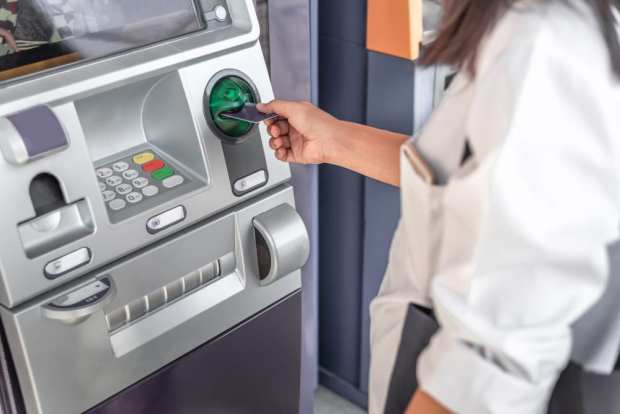Deep Dive: Offering An End-To-End Experience Through ATMs

The COVID-19 crisis has triggered a quantum leap among credit unions (CUs) toward offering innovative products and services.
Safety measures implemented to slow the virus’s spread have forced CUs across the United States to shutter their physical branches as states lock down and residents are confined to their homes. This has led many CUs to rethink how they can remotely and efficiently serve members, and many have opted to do so by reimagining and reinventing the ATM.
Consumers and businesses have been consciously moving away from cash-based payments in favor of digital alternatives, but the risk of infection has left many consumers particularly anxious about visiting physical branches and even ATM locations. Traditional ATMs have primarily been used to dispense cash and perform basic banking functions like viewing account balances, but their limited utility and high-touch interfaces have made them unappealing to many consumers amid the pandemic.
The new generation of ATMs, which CUs are using at a growing rate, are anything but traditional, however. CUs are now deploying machines that offer drive-thru services, and many come equipped with videoconferencing capabilities offering features that go far beyond allowing simple cash deposits and balance checks. They also support contactless ATM experiences that spare consumers from interacting with keypads. The following Deep Dive explores the innovations that have brought ATM banking into the digital age and redefined CUs’ roles as COVID-19 restrictions alter their relationships with members.
ATMs Go Touchless With Biometrics
Members’ anxieties about leaving their homes and coming into contact with surfaces that are frequently touched by others can prevent them from realizing the full benefits of their CUs’ services during the COVID-19 crisis. These fears have caused many to avoid cash and ATMs, especially during the first few weeks of statewide shutdowns.
Several innovative features provided by newer ATMs can solve these issues, however. Biometric solutions offer touchless alternatives to typing PIN codes on keypads, for example, as they can scan consumers’ facial features and irises to authenticate their identities without physical contact. Such solutions are already in use around the globe, too. Spain’s CaixaBank was the first to allow users to verify their identities at ATMs with facial recognition scans, and Jordan-based Cairo Amman Bank has used iris-scanning technology to verify its ATM users since 2009.
Biometrics also enhance ATM security by addressing another challenge resulting from the COVID-19 pandemic: increased identity theft and fraud. The Federal Trade Commission (FTC) reports that instances of identity theft have spiked during the outbreak, with almost 222,000 cases reported in the first quarter of 2020 alone.
Biometrics make identity theft more difficult for bad actors, as it is far harder to steal consumers’ biometric information than it is to obtain their names, PIN codes, credit and debit card numbers and other financial information. Such details can be purchased on the dark web for little more than the price of a coffee.
Consumers also simply enjoy using biometric verification and trust its security. Those who have used such technologies also report high levels of satisfaction with them, due in large part to their ease of use, data security and convenience. PYMNTS’ research shows that data security is the foremost reason for preferring biometrics, with 65.2 percent of satisfied users citing it as such. Adopting biometric verification tools thus presents a dual opportunity for CUs to enhance their ATMs’ security and their members’ experiences.
Offering In-Person Service Through ATMs
Interactive teller machines (ITMs) have also emerged as one of the more common innovations in CUs’ efforts to serve their members during lockdowns. These video-enabled ATMs allow consumers to check their account balances, deposit checks, withdraw cash and also initiate real-time videoconferences with human tellers for more complex transactions.
CUs have been employing cost-saving ITMs to provide services to members for some time, as these machines can offer round-the-clock access to financial services. These machines have become staples in CUs’ operations during the current health crisis, however, as many CUs rely on them to meet members’ personalized needs during shutdowns.
Kalamazoo, Michigan-based Consumers Credit Union is one such CU. It adopted ITMs in 2019, and the technology has become a key component of its member outreach efforts during the pandemic. Lansing, Michigan-based LAFCU and Associated Credit Union in Georgia are also relying on ITMs for many of their member-facing services.
CUs had previously been modest in their adoption of ITMs, but this was not due to a lack of interest. Some studies suggest that 60 percent of all CUs were interested in implementing their own ITM kiosks before the pandemic, even though only one-quarter provided them. Their interest has only increased as the outbreak has progressed, however, signaling a growing market demand that is likely to compel more CUs to adopt the technology.
The need for digital banking innovations like ITMs will likely remain strong long after states have reopened their economies, as well. PYMNTS’ research shows that the majority of consumers do not expect to return to their pre-pandemic lifestyles for another seven and a half months — or until a vaccine is widely available. CUs must therefore continue to provide their members with digital banking solutions that allow them to bank without breaking their social distancing regimens.

